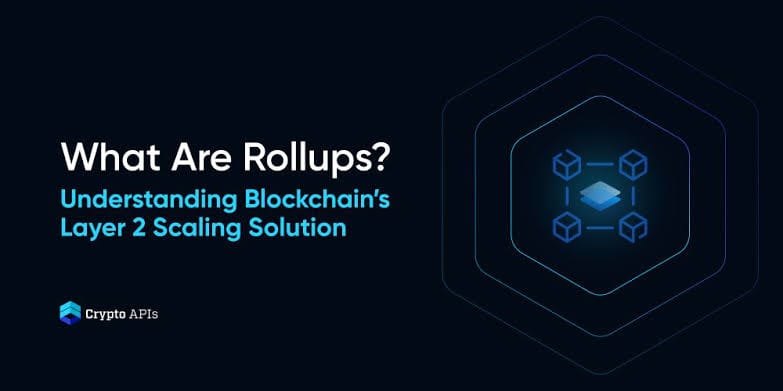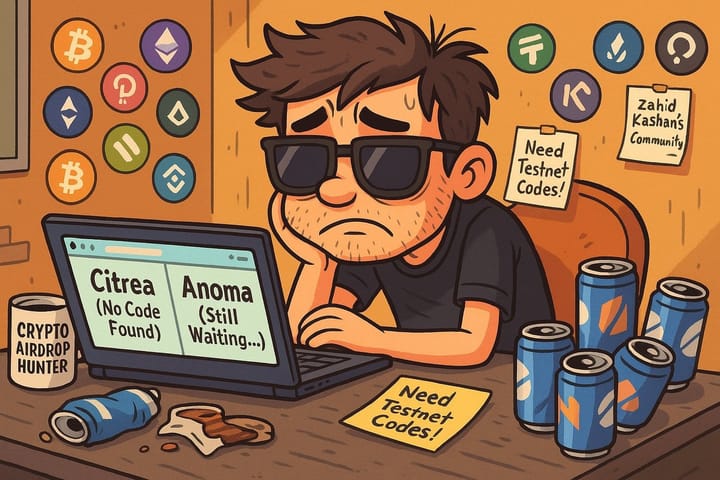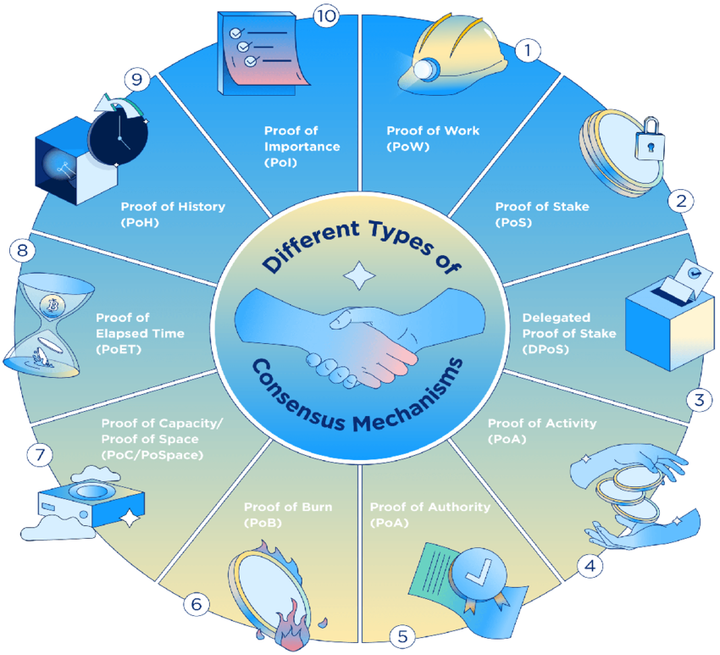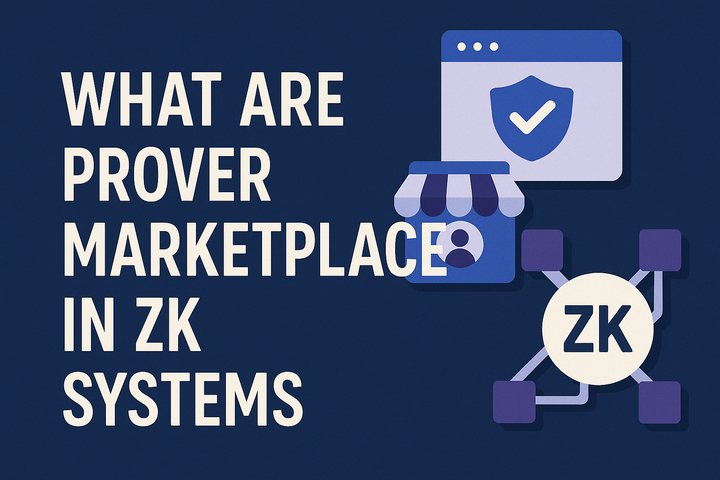Scaling in 2025: The State of Layer‑2 Rollups and Cross‑Chain Bridges

Introduction
2025 is shaping up to be a turning point for blockchain scalability. The dream of fast, cheap, and seamless crypto is no longer just wishful thinking—it’s happening in real time, thanks to major strides in Layer‑2 rollups and cross‑chain bridges.
Ethereum rollups like Polygon, Arbitrum, and Optimism have matured significantly, while interoperability networks like Cosmos and Polkadot are closing the gap between isolated chains. Together, they’re building the invisible infrastructure that makes blockchains feel as intuitive and instant as Web2 apps.
In this article, we’ll:
- Walk through the latest improvements in Layer‑2 throughput, latency, and user experience
- Explore how cross‑chain networks are finally delivering smooth, secure asset transfers
- Look at real-world impacts on developers, dApps, and users
Whether you're a builder looking for the best place to deploy, or just a crypto user tired of $40 gas fees and bridge confusion, this guide will help you make sense of where Web3 scaling stands—and where it’s going next.
Layer‑2 Rollups: More Than Just Lower Fees
Layer‑2 rollups have evolved from "side experiments" into the core scaling strategy for Ethereum. In 2025, the biggest names—Arbitrum, Optimism, and Polygon zkEVM—aren’t just reducing gas costs anymore. They’re delivering near‑instant finality, better developer tools, and native app support that’s making life easier for both users and builders.
Take Arbitrum, for example. Its Stylus upgrade now supports both Solidity and Rust, giving developers far more flexibility when building complex apps. Optimism’s Superchain vision is starting to materialize too, with a growing network of OP Stack rollups—each sovereign, but interoperable with one another. The goal? A modular, multi‑app ecosystem where every rollup shares security and liquidity but keeps custom logic.
Polygon, meanwhile, continues to double down on zk‑rollup technology, with its zkEVM offering EVM equivalence while drastically reducing proof times. Faster proving means faster settlement, and with Polygon CDK (Chain Development Kit), launching a zk‑powered rollup is now as easy as deploying a smart contract.
These improvements go beyond speed or cost—they’re smoothing out rough UX edges:
- Bridging ETH to L2s takes seconds, not minutes
- Wallets like MetaMask and Rainbow auto‑switch between rollups
- Gas fees are so low (pennies or less) that users barely think about them
- Native account abstraction is enabling email‑based logins and gasless transactions
What used to feel like a science project now feels like a real app. And that shift is what’s pushing Layer‑2s into the hands of mainstream users—whether they know it or not.
Cross‑Chain Bridges & Interoperability: From Risky to Reliable
Let’s be honest: in 2021–2023, bridges were a mess. Clunky interfaces, 20+ minute wait times, and constant hacks made them a necessary evil for anyone moving funds between ecosystems.
But by 2025, things look very different. Cross‑chain protocols like Cosmos (via IBC) and Polkadot (via XCMP) now offer fast, secure, and trust‑minimized messaging, allowing assets and data to flow across chains without passing through sketchy multisigs or fragile third-party relayers.
In Cosmos, the Inter‑Blockchain Communication (IBC) protocol has become a reliable standard. Chains like Osmosis, Celestia, and dYdX connect natively with Cosmos Hub, creating an app‑chain internet where tokens and data move with just a few clicks—no wrapped assets, no centralized bridges.
Polkadot, meanwhile, has been quietly refining its parachain architecture, where dozens of purpose-built chains share security but operate independently. In 2025, this model is hitting its stride, especially with new light‑client bridges and simplified user flows. Moving tokens between parachains is now nearly instant, and tools like Talisman and SubWallet make it feel as easy as sending a text.
Meanwhile, third-party bridge protocols like LayerZero and Axelar are gaining traction by offering unified APIs and omnichain asset support. Developers can build apps that auto‑detect what chain the user is on and route the interaction accordingly. No more popups asking you to “switch network” before doing anything.
These advances are about more than convenience—they’re enabling a new kind of app: one that lives across chains, not just on top of one.
Real‑World Impact: What This Means for Developers and Users
So what does all this technical progress actually mean on the ground?
For developers, it means faster iteration, less backend complexity, and bigger addressable markets. With rollup SDKs and cross‑chain frameworks, a team can deploy a dApp that runs on multiple chains, speaks to different users, and settles on Ethereum for security—all without building custom bridges or maintaining multiple codebases.
For users, it means onboarding is smoother than ever. You can connect a wallet once and interact with apps on Arbitrum, Optimism, Cosmos, and beyond—without caring which chain you’re on. You pay less in fees, deal with fewer steps, and get confirmations in seconds.
And for the ecosystem as a whole, it means we’re finally seeing scalable infrastructure that doesn’t break when more users show up. DeFi protocols process more trades without clogging. NFT platforms mint thousands of assets without spike-induced gas wars. On-chain gaming is viable. The door is open for mass adoption.
In short: scalability is no longer the blocker. UX is catching up. Now it’s about onboarding people, not engineering miracles.
Conclusion
The past few years were all about talking scalability—Layer‑2s, zk‑rollups, multichain futures. But 2025 is where the real shift is happening. Thanks to major breakthroughs in Ethereum rollups and cross‑chain infrastructure, we’re now seeing:
- Lower fees and faster finality that users actually feel
- Interoperable ecosystems where apps work together instead of living on islands
- Developer tooling that unlocks richer, more responsive dApps
- User experiences that rival (and sometimes beat) centralized platforms
Scaling is no longer a theoretical debate—it’s active, working, and real. The projects and protocols that embrace these tools today will be the ones leading Web3 into its next phase: one where apps are easier to build, easier to use, and open to everyone.
The tech is ready. Now it’s time to build—and onboard the world.
Internal Mitosis Links & Glossary References
- Bitcoin
- Blockchain
- Cryptocurrency
- Mitosis Core: https://university.mitosis.org/mitosis-core
- Governance: https://university.mitosis.org/governance
- Glossary: https://university.mitosis.org/glossary/
- Ecosystem Connections: https://university.mitosis.org/ecosystem-connections



Comments ()